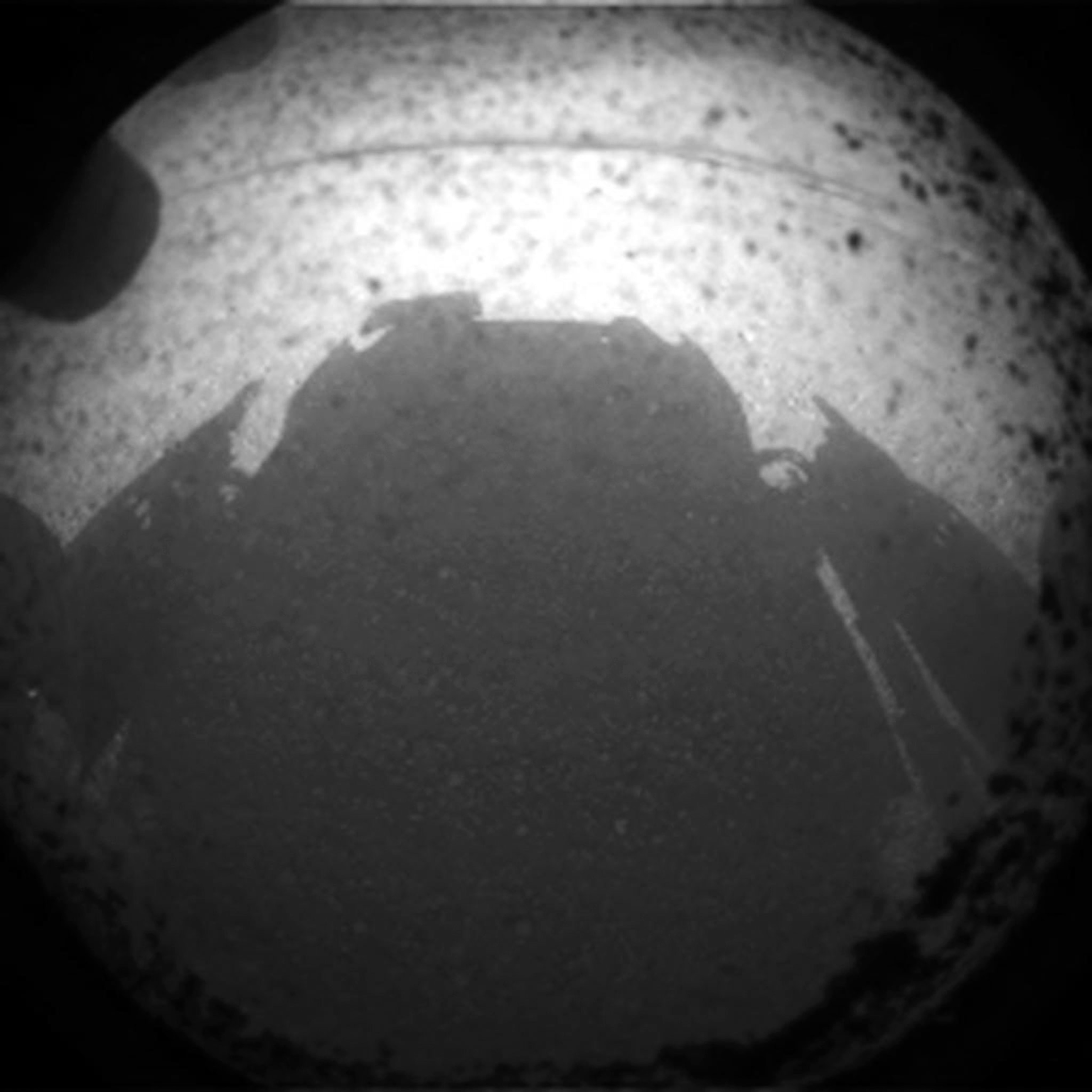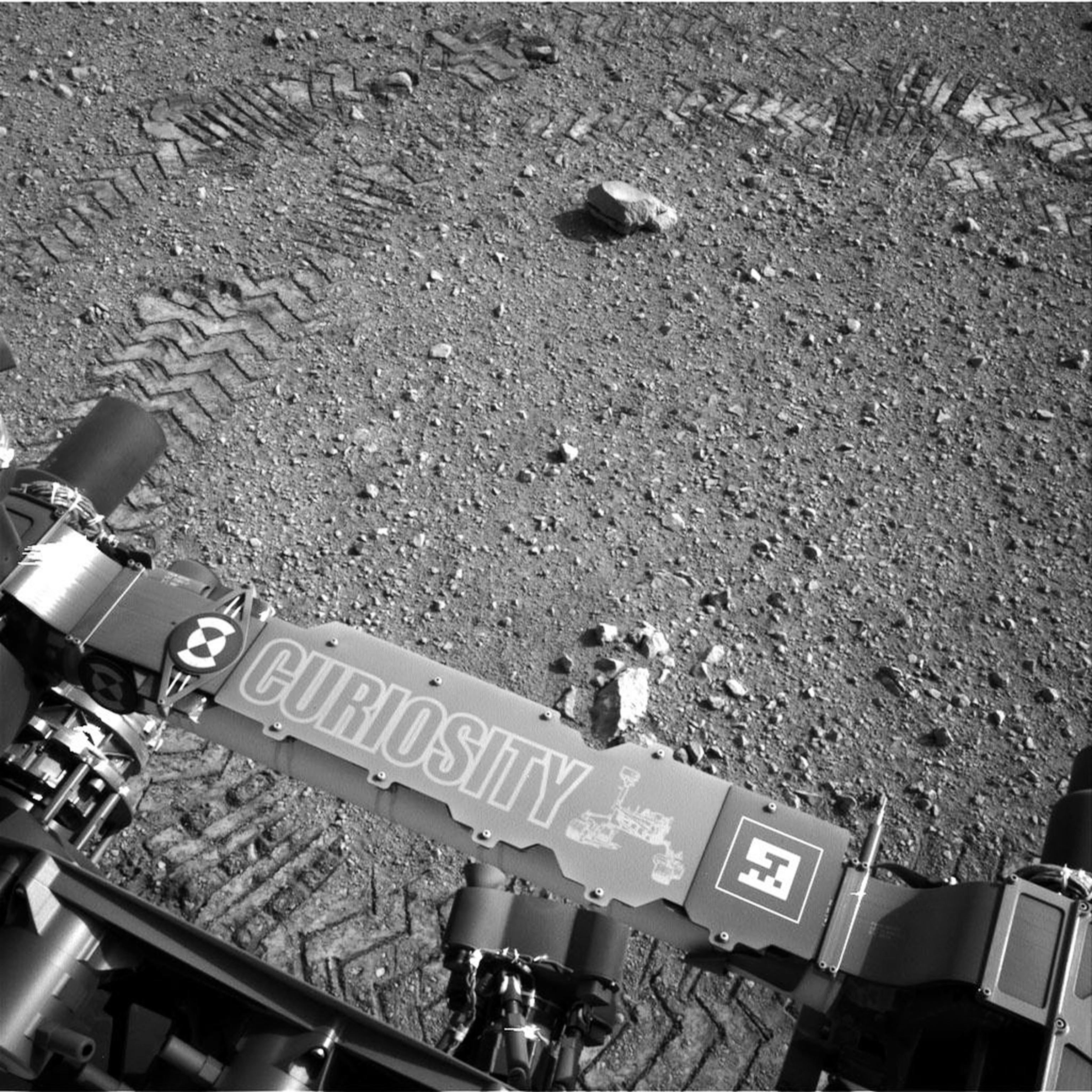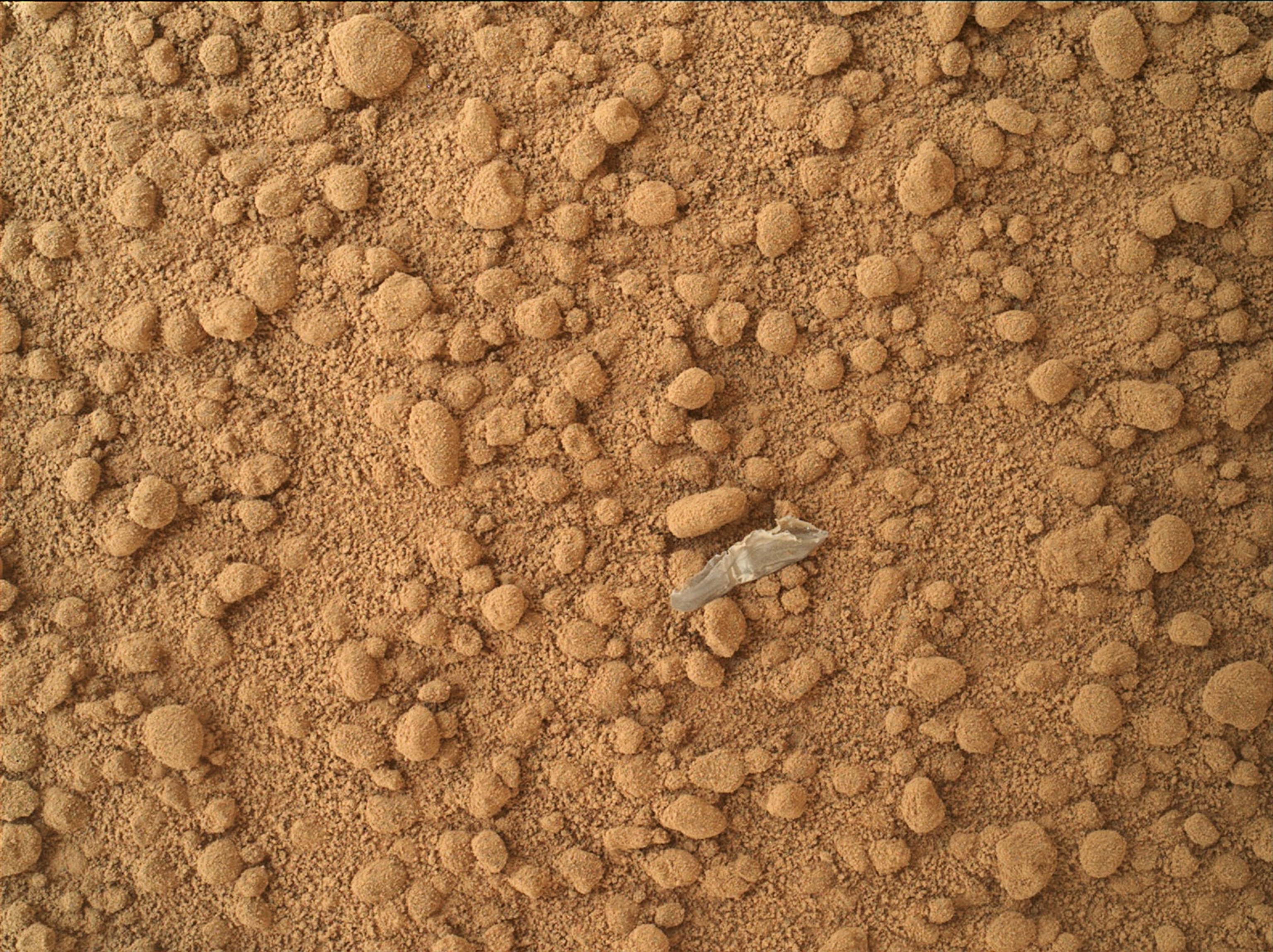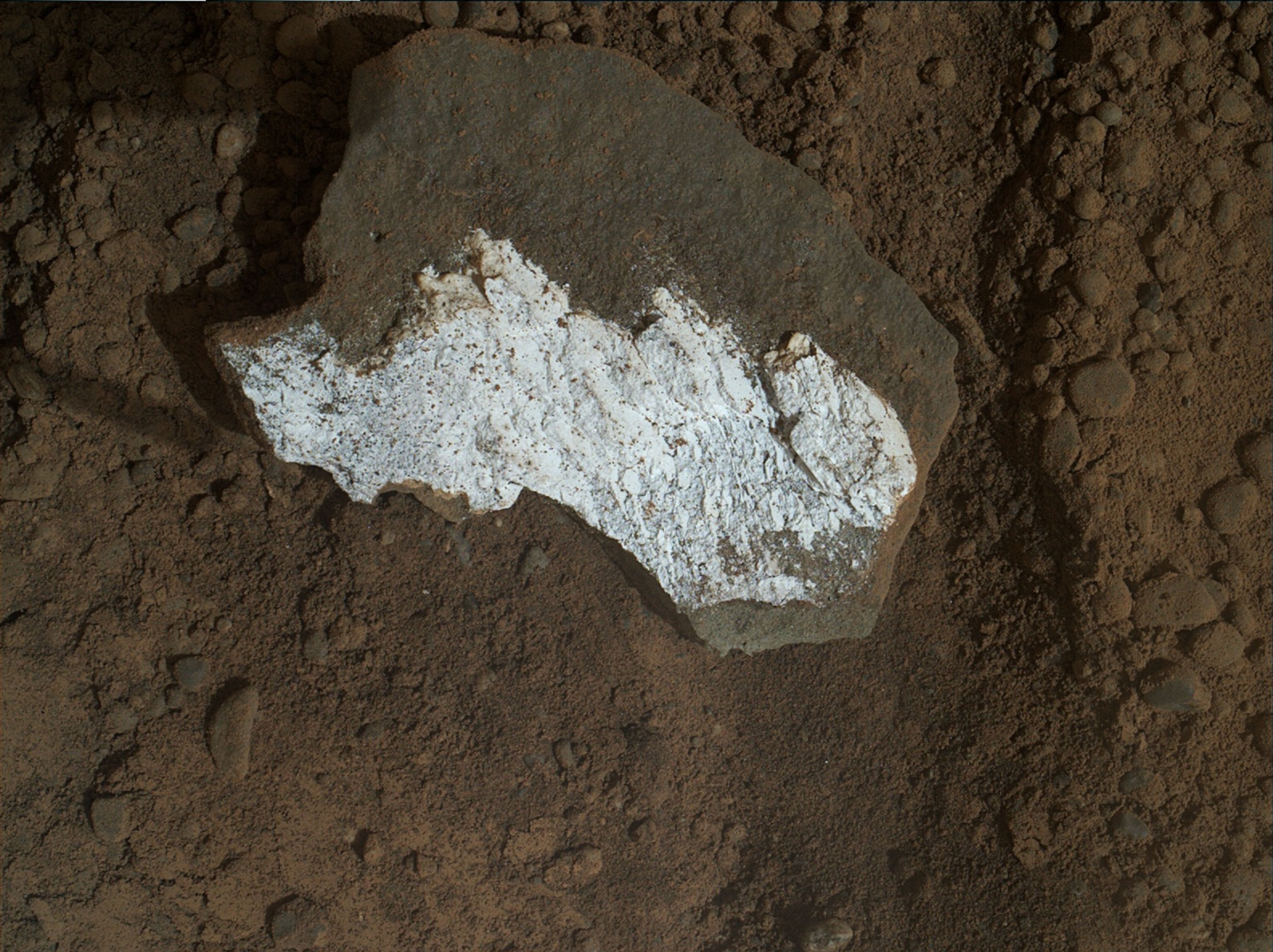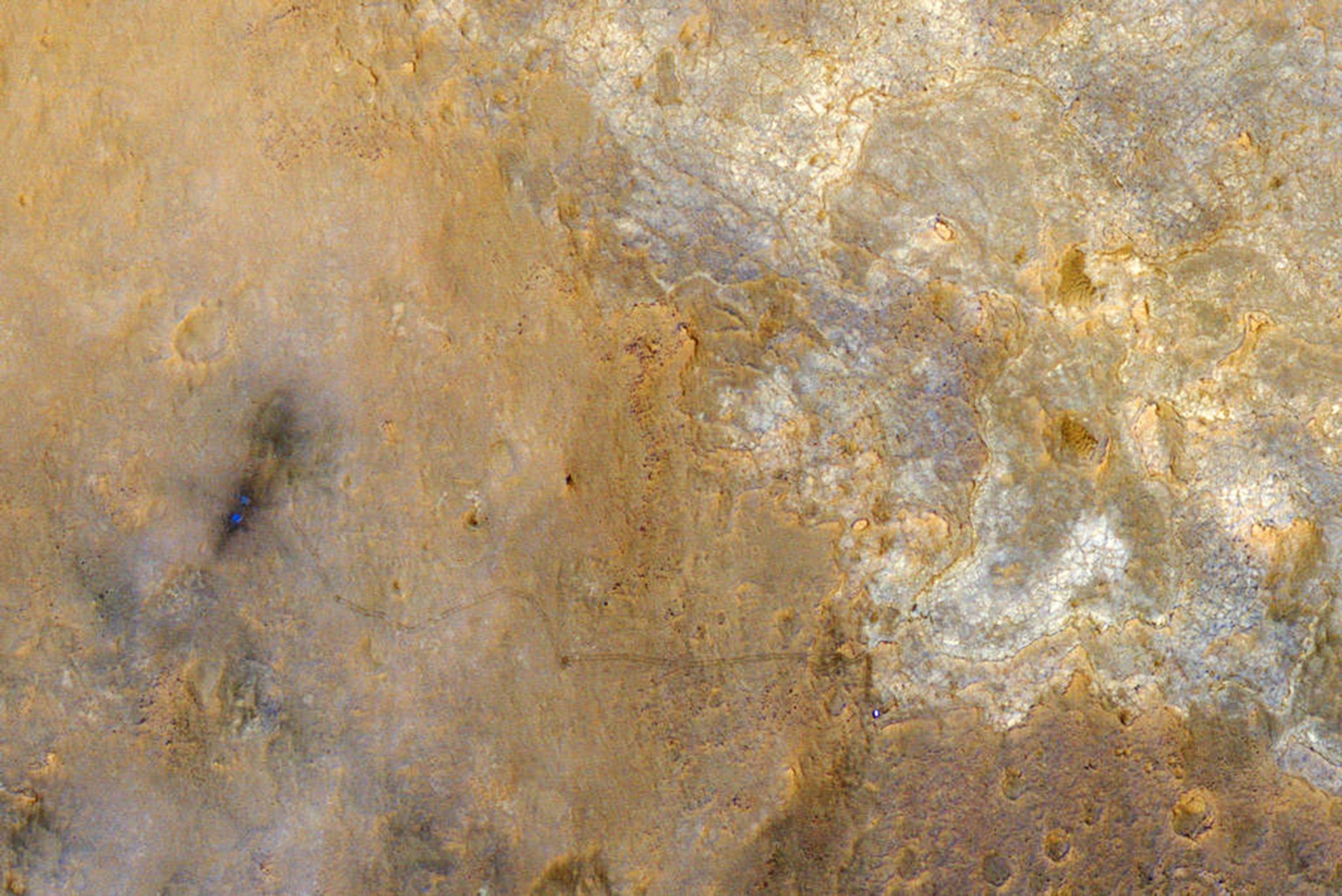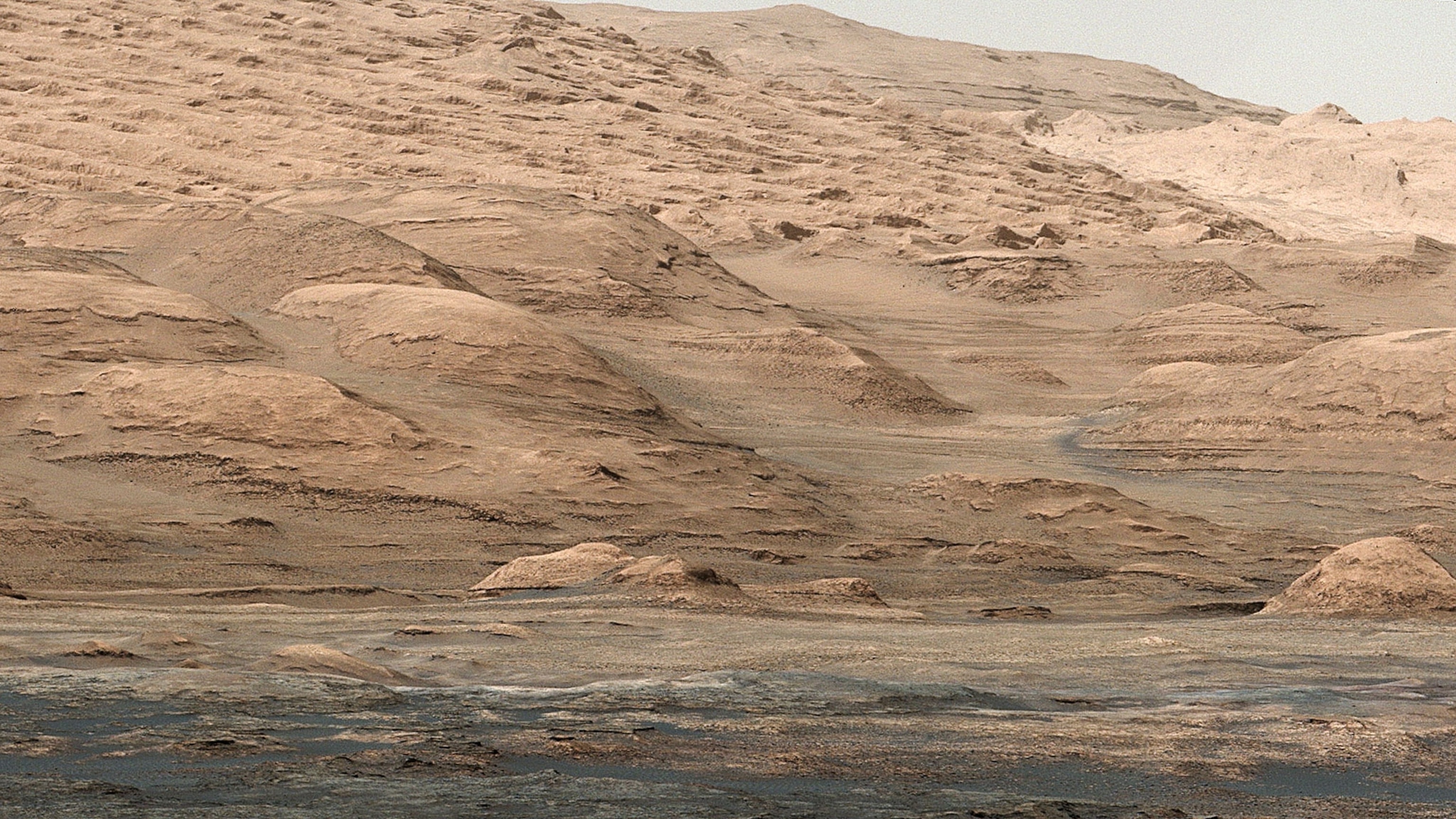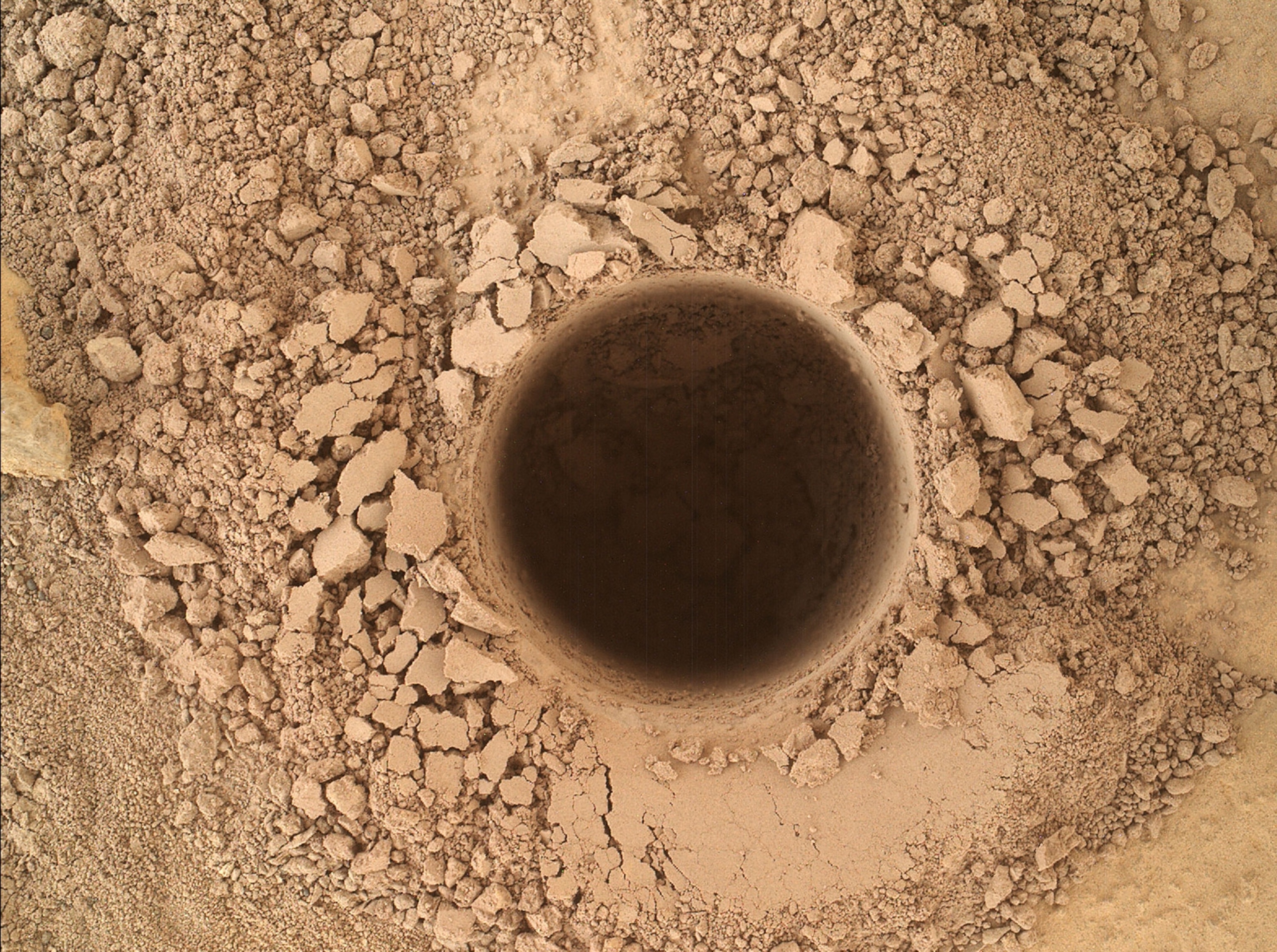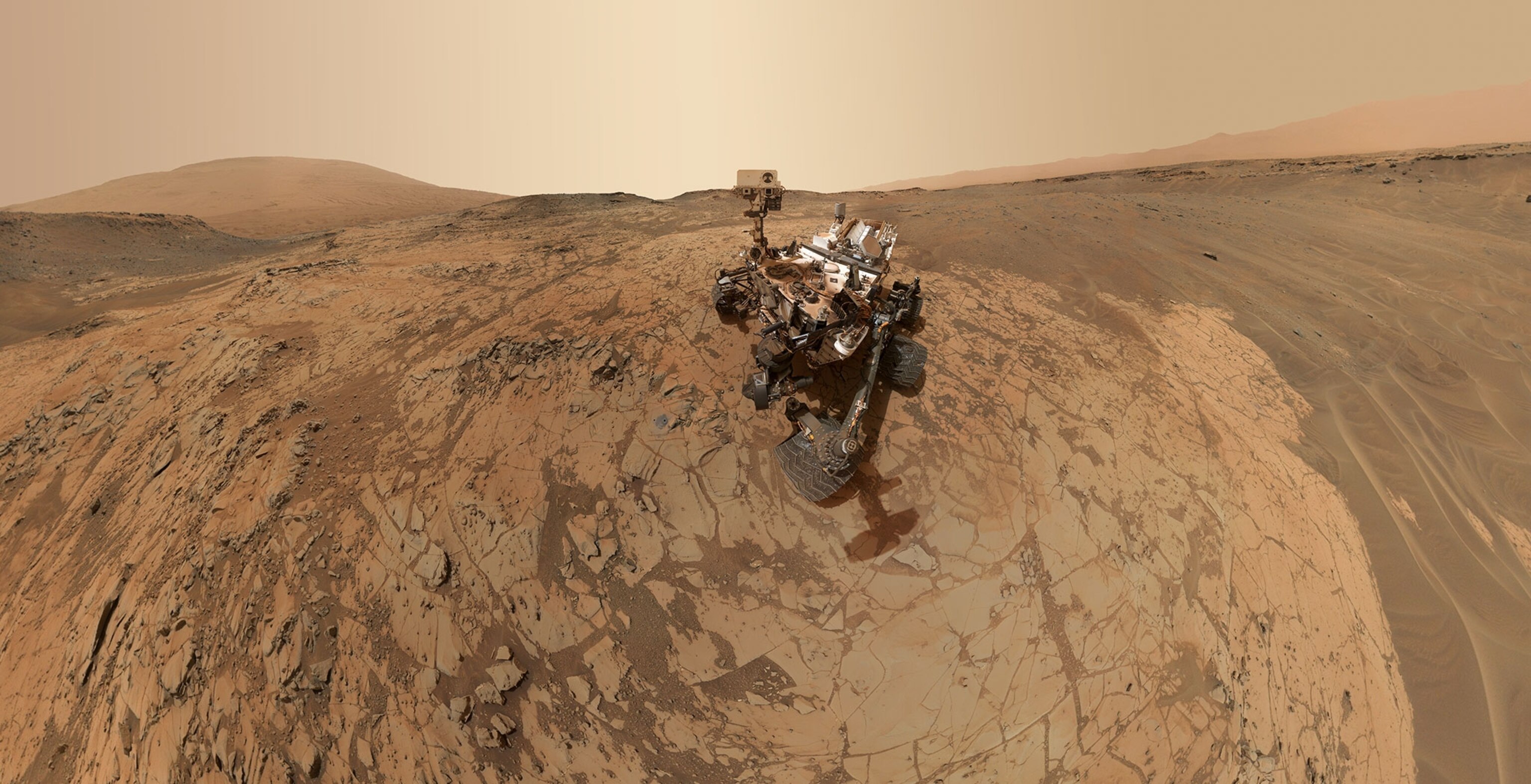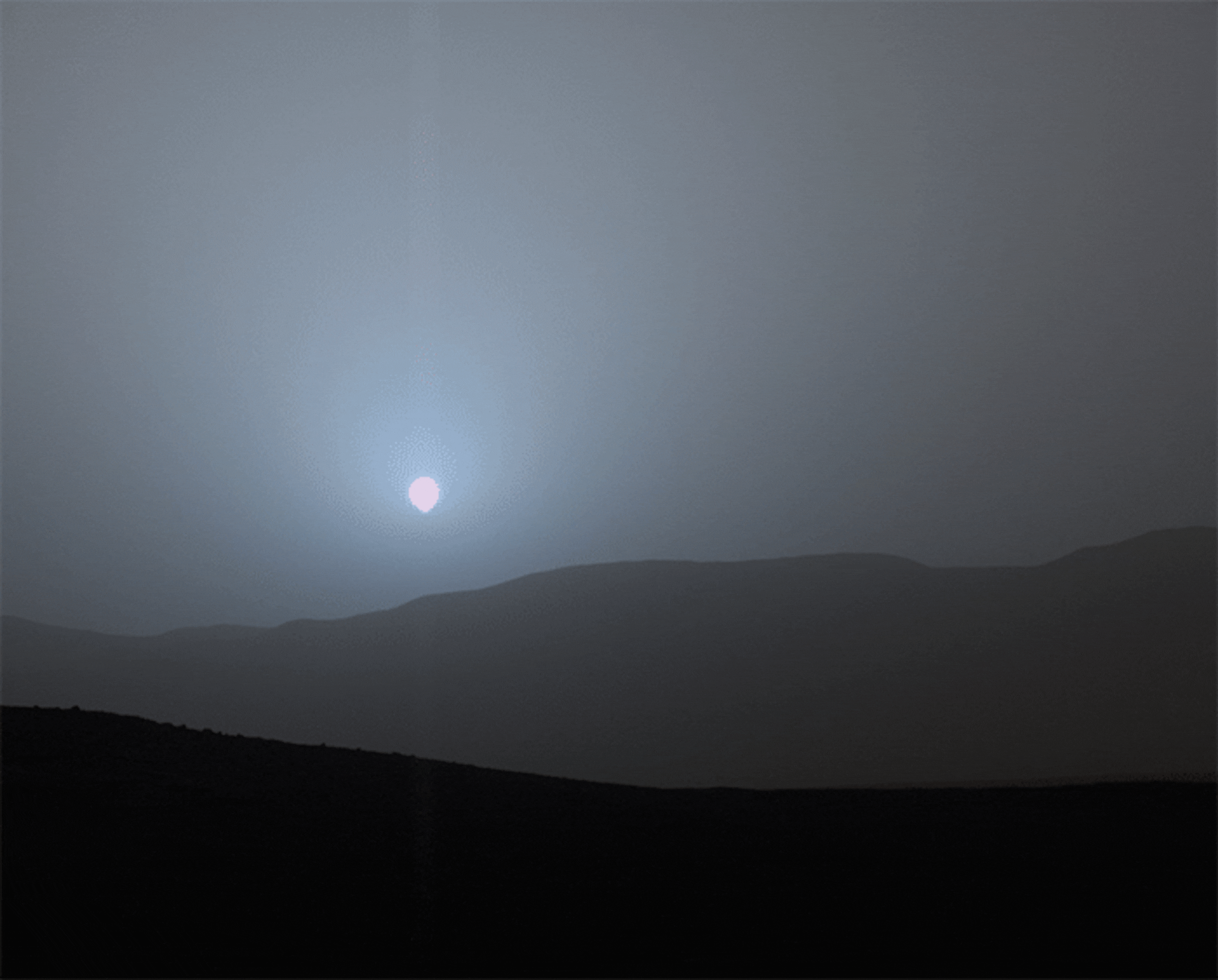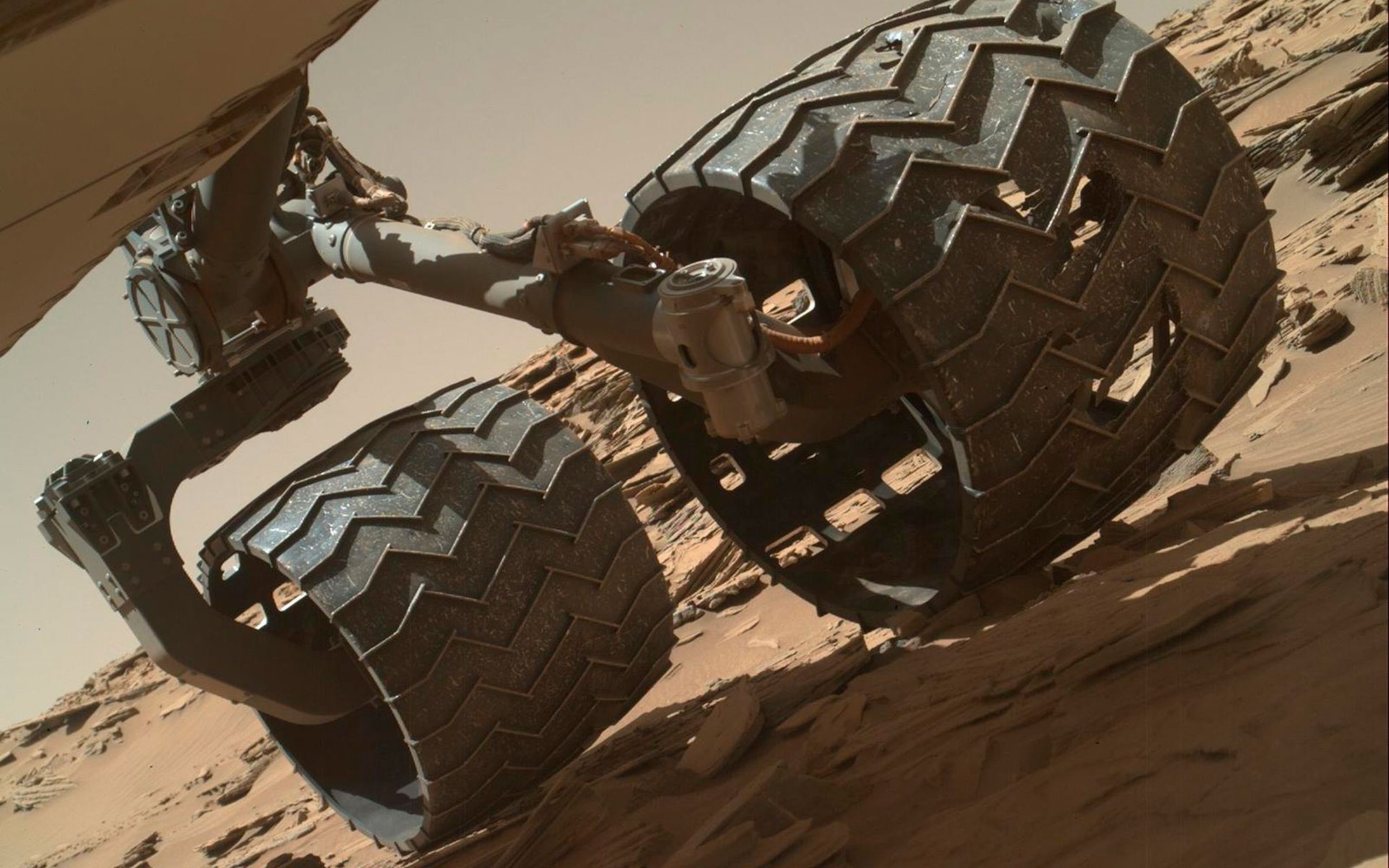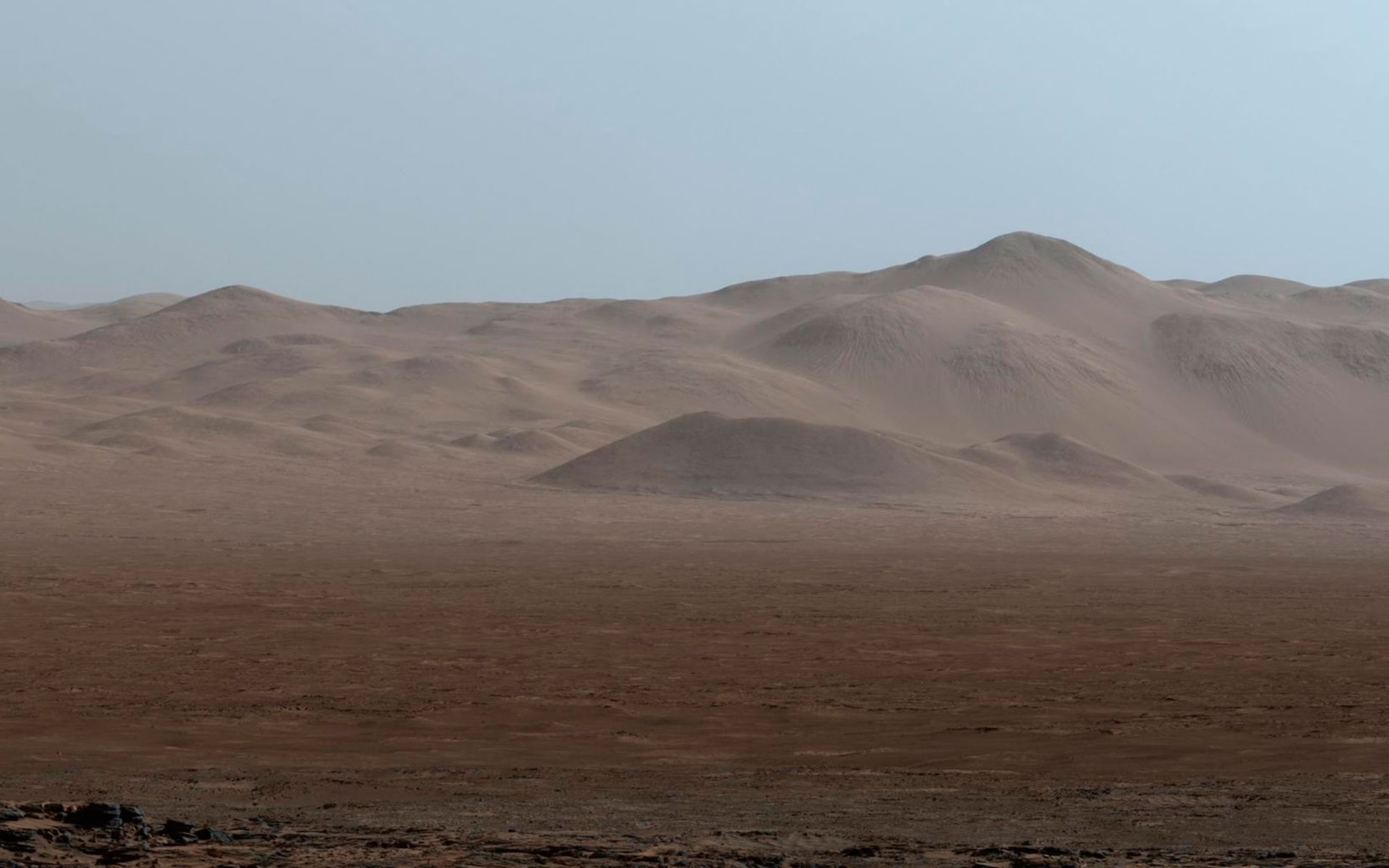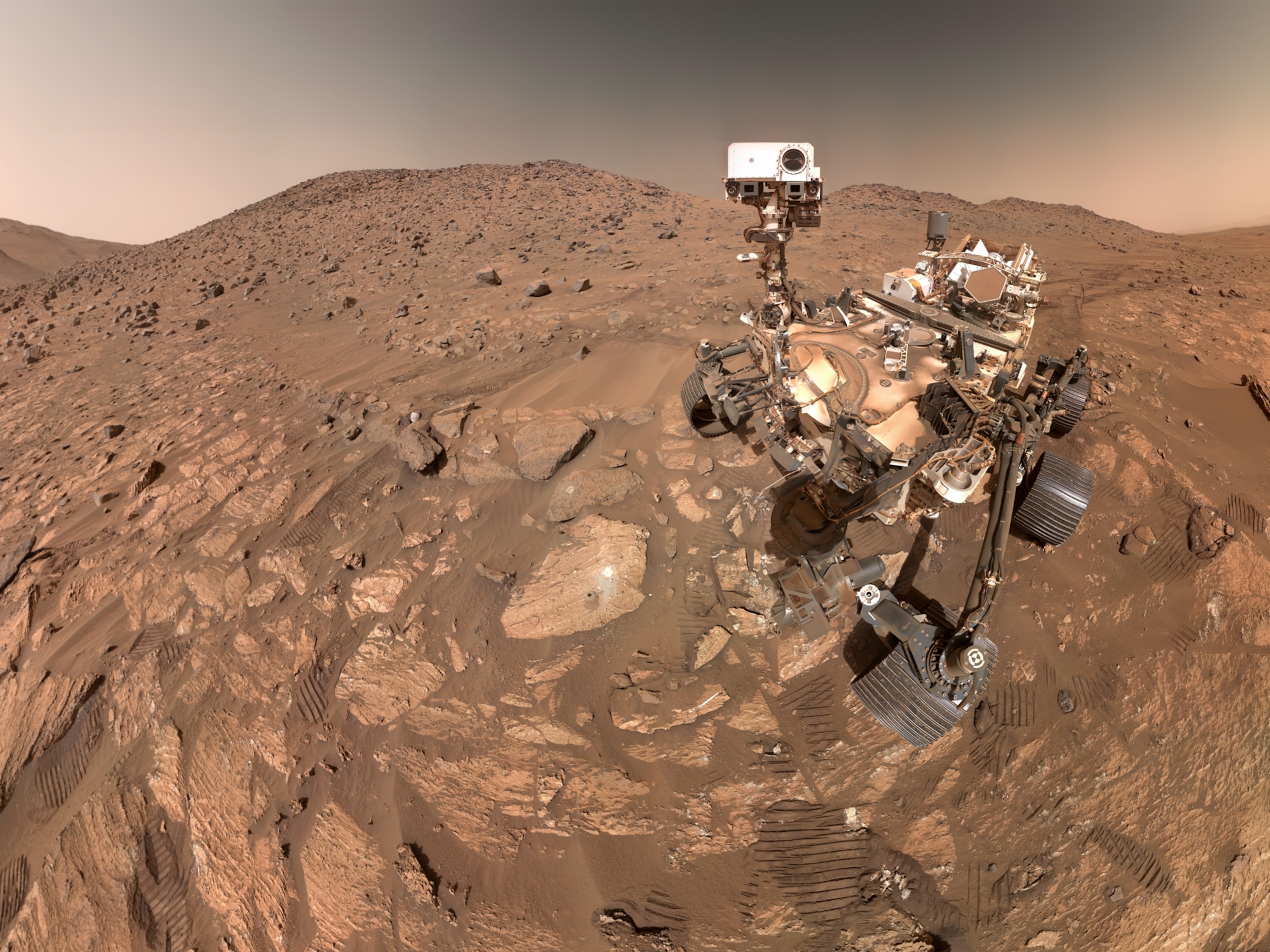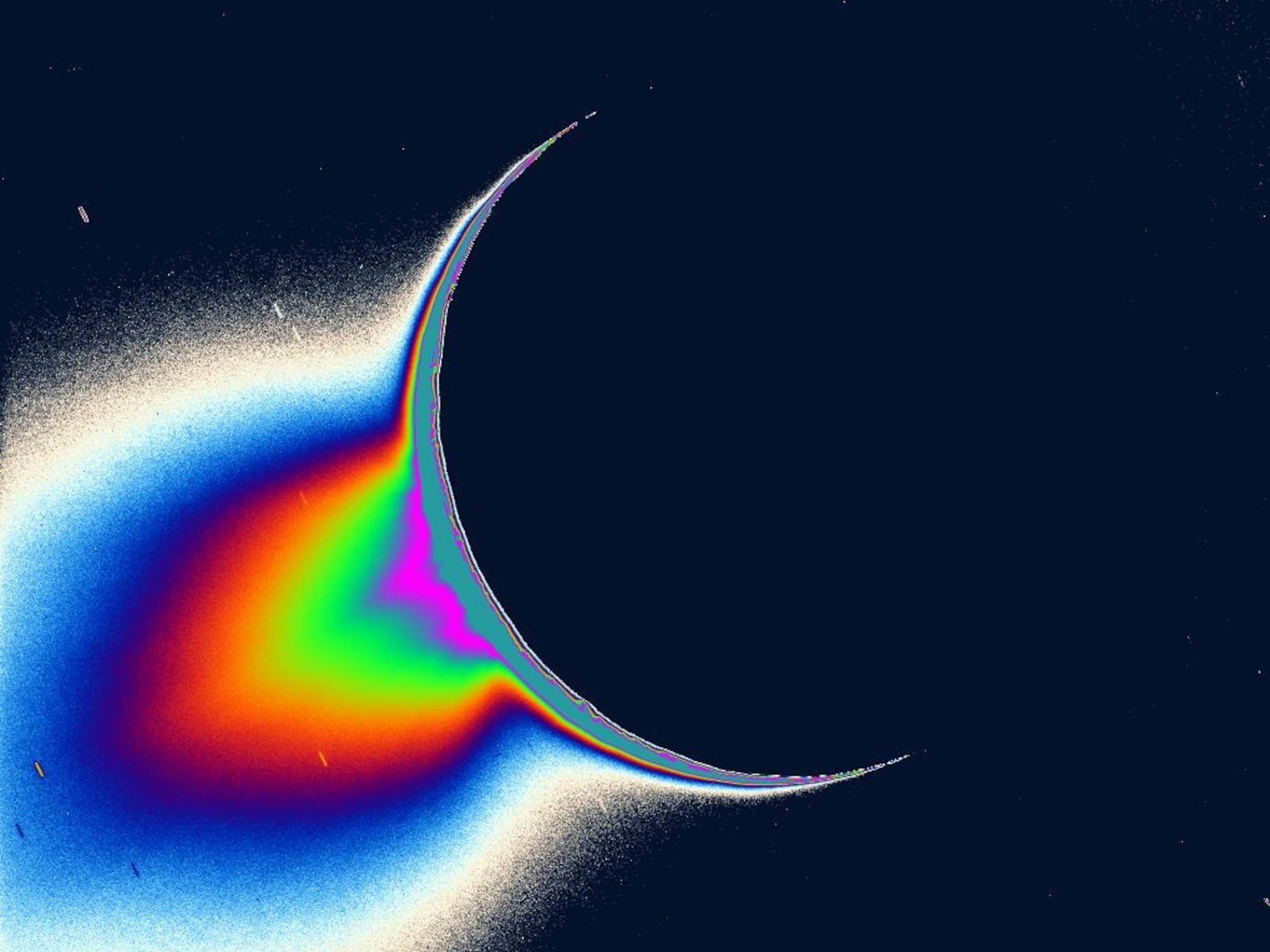4 Years on Mars: Curiosity's Incredible Journey in Pictures
Four years after its harrowing descent through Mars's thin atmosphere, Curiosity celebrates its action-packed journey.
Four Earth-years ago today, NASA’s Curiosity rover successfully touched ground on Mars's dusty surface, after surviving a nail-biting descent through the red planet's thin atmosphere.
Since its triumphant arrival, the car-size "laboratory on wheels" has traveled more than 8.4 miles (13.5 kilometers), taking pictures, collecting samples, and analyzing rocks along the way. Recent software upgrades even let Curiosity autonomously choose which rocks it examines—and shoots with laser beams.
Curiosity has spent more than 1,421 sols, or Martian days, exploring Gale Crater, a low-lying region that may have held past life, if it existed. While the rover has yet to confirm whether Mars once hosted living things, it has found evidence of an ancient freshwater lake in the sediments of Yellowknife Bay, the lowest point of the crater, offering tantalizing insight into the planet's past habitability.
Since September 2014, Curiosity has been examining Mount Sharp, a mountain of layered rocks towering more than three miles (five kilometers) high in the middle of Gale Crater.
These layers likely "captured a long record of time, just like the layers in the Grand Canyon," said Ashwin Vasavada, Curiosity's deputy project scientist, in a previous interview.
Beyond examining rocks, Curiosity has a suite of weather instruments that has been providing scientists with crucial information about the planet. For instance, researchers are tracking changes in methane in the Martian atmosphere, which fluctuates by up to a factor of 10 for unknown reasons. The rover also monitors the peculiar flow of winds inside the large basin of Gale Crater, and it keeps tabs on radiation exposure on Mars, which may affect future human missions to the red planet.
Even after four years—and a recent software scare—the rover is healthy and has a lot of life in it. Speaking from the rover's perspective a year ago, "we don't feel like we are getting old yet," said Vasavada. "We still feel like we have a lot ahead of us."
Maya Wei-Hass contributed reporting.

